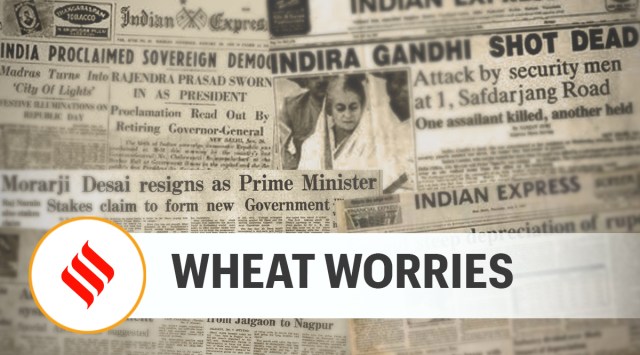
It’s clear now that India isn’t going to harvest a bumper, forget record, wheat crop this time. The all-time high output estimate of 111.32 million tonnes (mt) was made by the agriculture ministry in mid-February, when the crop looked good, thanks to surplus rains and an extended winter. A marginal 0.8 per cent acreage drop and initial availability issues in fertilisers notwithstanding, overall production prospects were bright till at least mid-March. But then came a sudden spike in temperatures and the mercury touching 40 degrees Celsius levels in most wheat-growing areas before the month-end. The early onset of summer, with practically no spring, impacted the crop at the time of grain-filling: Day temperatures should ideally be in the early-30 degrees range during this “dough” stage, when the wheat kernel is accumulating starch, protein and other dry matter. The heat stress post mid-March resulted in premature ripening and shriveling of grains.
If production and procurement do turn out much below expectations, there are two things the government can do. The first is cut wheat and correspondingly raise rice allocations under the PMGKAY. Some additional wheat may, in fact, be necessary for undertaking open market sales, especially in the latter half of the fiscal. The second thing is to be less gung-ho about exports. Yes, Indian wheat is highly competitive in the global market today and there’s scope to ship out, maybe 10 mt in 2022-23 over and above the 7.85 mt last fiscal. But let these exports happen through the private trade in the natural course. The government mustn’t push beyond a point, leave alone exporting from its stocks. The worst thing would be to talk about “feeding the world” today and then, all of a sudden, announce a ban on exports.